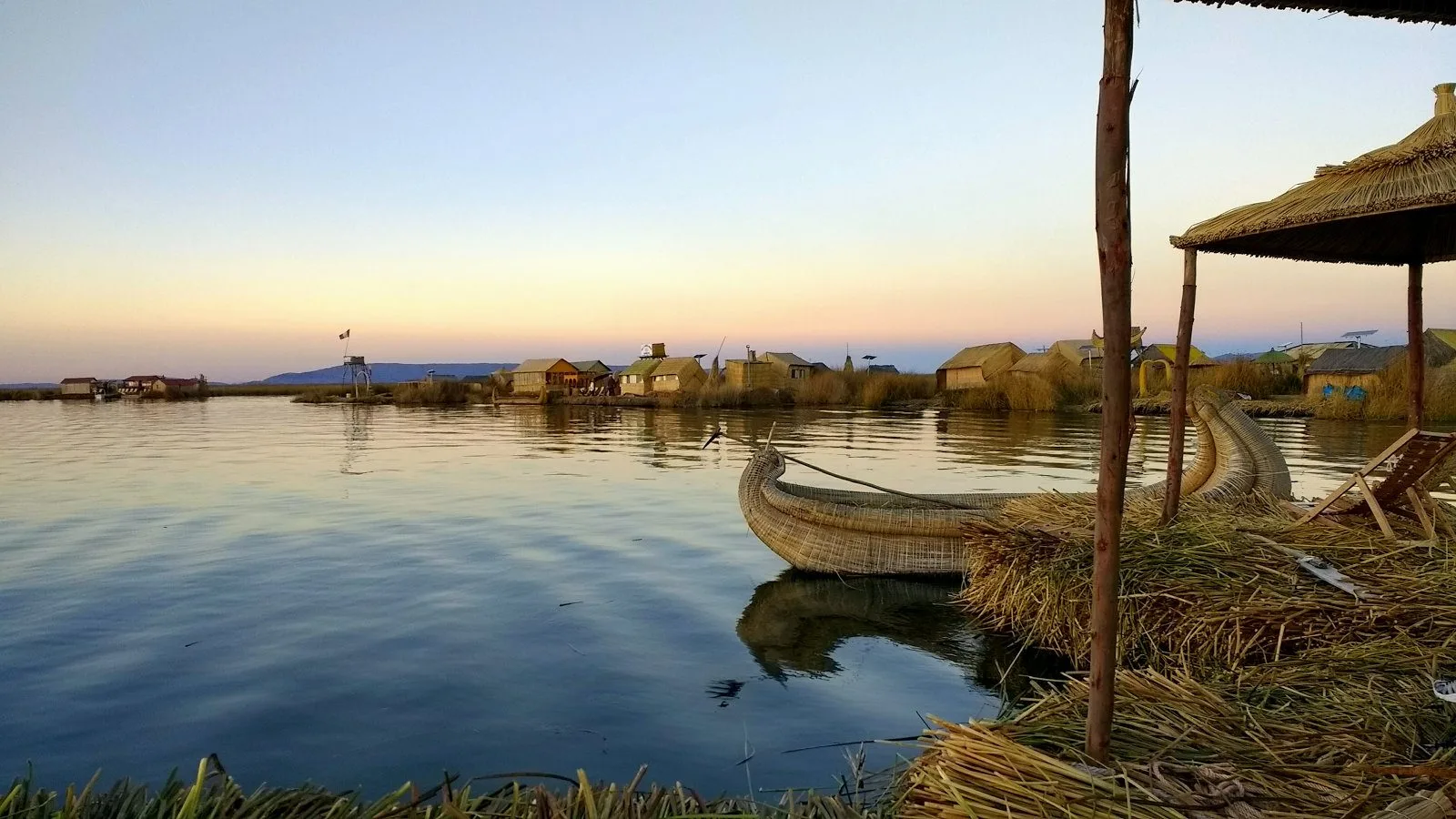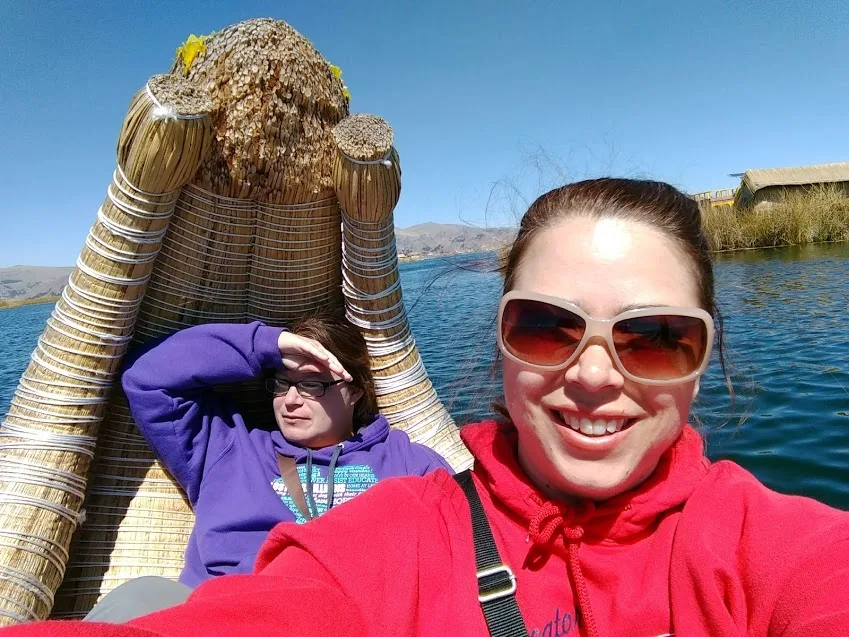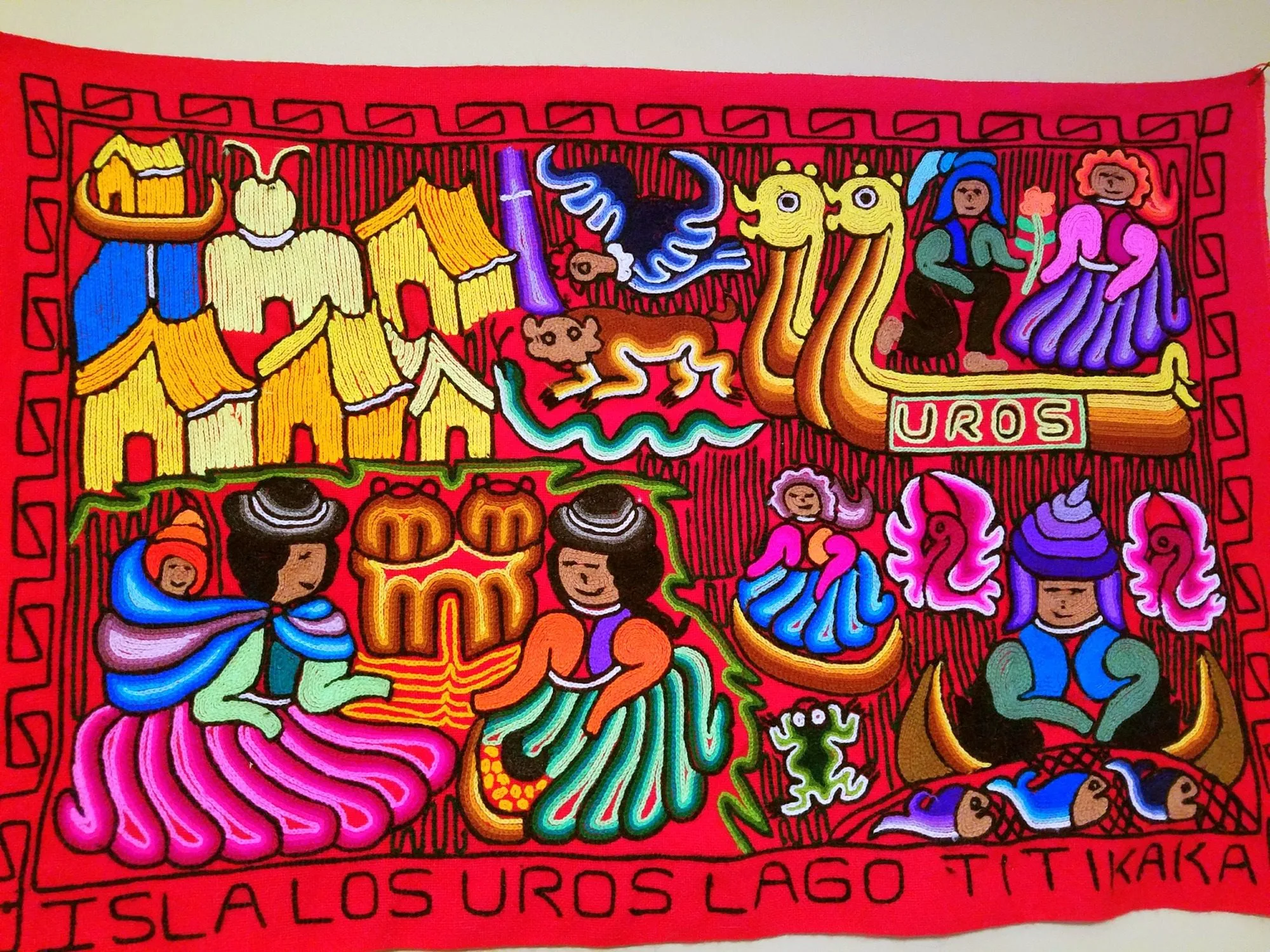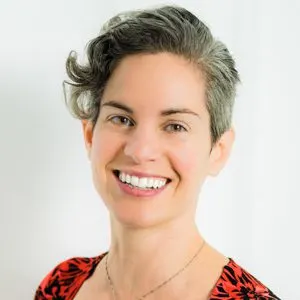
Teaching Traveling: Travel for vacation and fun helps so much to refresh us teachers!
Let’s hear the story of how teachers Karen Krzystof-Bansley and Alison Murphy-Clausing created a Lake Titicaca adventure. Ladies, tell us about yourselves.
K & A: We have been friends for about 25 years. Alison teaches high school English and Spanish, and Karen teaches 6th Grade. We just started our nineteenth years in our teaching careers. We are both avid travelers and life long learners who love teaching about new cultures and exciting places.
Karen teaches in suburban Burbank, Illinois and Alison teaches in the small town of Streator, Illinois. Both of us feel a strong connection between our desire to travel and our desire to share what we learn through our travels. Our long friendship and passion for travel has brought us to thirty-five states and ten countries together.

TT: Wow! Tell us about your most recent travels.
K & A: We recently did a homestay with an Uro family on a floating island in Lake Titicaca. It was hands down my favorite travel experience ever. We knew that we wanted to stay in or near Puno, Peru, which is a very interesting city on the shore of Lake Titicaca, and Karen found a native owned place to stay on one of the Islas Flotantes de los Uros, aptly named Samaraña Uta, which means “place of rest” in Aymara.
The first shocking experience was stepping on the island, and feeling a vertigo-like rush of realization that we were actually on a floating island! As we walked on the island, we could feel it move. It was fantastic.
The sweet and salty smell of the reeds hung in the air and the layers of reeds that carpeted the ground crunched and softly yielded under our tread as we made our way to our quarters. The colors of the water and sky, the reeds, the beautiful art that we saw everywhere, and the various structures on the islands that we saw around us were visually stunning.
Though we booked online and saw several photos, we were not 100% sure what our room would be like. When we entered our room we were impressed that it was beautifully decorated with handmade local art and it was immaculately clean. The treat to the senses cannot be overstated. When we left, we were genuinely sad because we both knew there was a good chance that we would never be someplace that looked, smelled and felt so magically beautiful ever again in our lives.

We are both pragmatic and frugal travelers, so we were ecstatic when our host, Cesar, told us that food was included in our stay. The food was an important part of our stay. All of the meals were home cooked by Lucy, Cesar’s wife, with local ingredients.
Not only was the food extremely healthy and delicious, but mealtime was a chance for us to get to know fellow travelers. During our time there we first had a chance to befriend two hilarious sisters from Lima who were very fun to spend some time with.
Later, we were lucky to make the acquaintance of a very friendly couple of writers who were very pleasant to chat with during mealtimes and during one of Cesar’s tours.
Also included in our stay were two boat tours of Lake Titicaca. During the first boat ride, Cesar took us on a ride to where the totora reeds grow tall and he told us how the islands are built, using blocks of pressed totora reed roots as a foundation about one meter thick, then layering two meters of fresh totora reeds as the ground, replacing the outer layer every 5-15 days.
He went into great detail explaining celebrations, marriage customs, male and female roles, the education system, history, and anything else we wanted to know about. He spoke with such contagious love and enthusiasm for the floating islands! He told us, “I live in paradise. I can fish, hunt, gather eggs. Everything I could want is free. I can go to the mountains and trade fish or eggs for quinoa or anything else I need.”
For the second boat tour we went to an island where the kindergarten and grade schools are located. The school buildings that dotted the islands were deserted due to a teacher strike that had been going on for over 40 days, but we peeked in the windows, took some photos and asked several questions.
Cesar credits the growth of tourism in the area for a couple of things that have had a major impact on the quality of life, one of which is the widespread use of solar power, and another one that he is quite proud of is education. He said, indicating the islands around us, “All of the children go to school. All of them. There are more chances, more opportunities.“ He was emotional talking about all of the changes, and it was clear that he sees better times ahead for his people.

TT: Fascinating! How do you find your travel opportunities?
K & A: We tend to look for places that we would like to learn about which we would also like to teach our students about. Because Alison is a Spanish teacher, that often means Latin American countries. We usually spend months working on a budget and coming up with an itinerary.
This travel opportunity came to us through Booking.com. [Lillie’s note: That link is an affiliate which supports this site at no cost to you.] When searching for accommodations in the area, it stood out as one of the best rated by previous travelers. With a little more research we learned that it was more than just quarters to stay in for a night or two; it was a once in a lifetime experience.

TT: Love it. How did you find the money to fund your travel?
K & A: Alison earns money little by little by taking any sort of extra paid work that fits into her schedule. She subs during her prep period as often as she can, and throughout the course of the school year it really adds up. She also works at football games every so often and runs the local Spanish Club.
Karen used her frequent flyer miles to “pay” for the airfare on this trip. A major expense for every trip is always airfare, so using her credit card to earn miles definitely is an integral part of planning for her trips. She also applies for multiple teaching travel grants each year. She was fortunate enough to have been chosen to travel to Germany with the TOP (Transatlantic Outreach Program) in June of 2016. Also, since travel is a priority she don’t mind scrimping and saving in other areas.
TT: Wonderful. Now, tell us one moment from your travels that was particularly powerful, interesting, or funny.
Alison: The five year old girl in the family, Litzy, liked to watch music videos on our cell phones. When Karen asked Litzy what her favorite song was, she said, “Despacito!” She asked me to watch “Frozen” music videos in English, French, and Spanish. When she watched the video in English, she sang the song in Spanish.
It was so adorable! It was a moment that made this big, wide world seem smaller and more connected.
Karen: Litzy was such a sweet girl. I choose some Mickey Mouse videos for her to watch on YouTube and she was enthralled. It didn’t seem to matter that the video was in English!

TT: Awesome! How have your travels impacted you as a teacher, and as a person?
Alison: My travels have made me want to teach about the places I’ve been and share my experiences and what I have learned. As a teacher, they impact both the content I teach and my approach. As a person, my travels have made me curious about the world at large. The more I learn and the more I see, the more I realize I have yet to learn and the more I yearn to see.
Karen: I feel that the best way to inspire students to become lifelong learners is to show them that you are a lifelong learner. Even as an adult, I feel like I have so much more to learn! As my interests change over the years, I find that my travels reflect these new interests as well. Also, it’s definitely worthwhile to go back and revisit areas (if possible) to see how the place has evolved over the years.
TT: Thanks so much! Readers, what questions or comments do you have?

The author, Lillie Marshall, is a 6-foot-tall National Board Certified Teacher of English from Boston who has been a public school educator since 2003. She launched TeachingTraveling.com in 2010 to share expert global education resources, and over 1.6 million readers have visited over the past decade. Lillie also runs AroundTheWorld L.com Travel and Life Blog, and DrawingsOf.com for educational art. Do stay in touch via subscribing to her monthly newsletter, and following @WorldLillie on social media!

Rich Long
Sunday 11th of February 2018
My traveling friend Mick and I had the opportunity to stay two days and two nights with Cesar, Lucy & Litzy in September 2017 while on a 14 day trip to Peru and Bolivia. You are so right that Samarana Uta and the Uros' Islas Flotantes on Lake Titicaca is a magical place. The Uros life and culture is unique and unlike any I have ever experienced before. Thank you for the wonderful article on your trip. Brings back pleasant memories.
Sarah
Sunday 24th of December 2017
>When she watched the video in English, she sang the song in Spanish.
Wow, that's so cute! What a special moment :)
Alison Clausing
Tuesday 24th of October 2017
Hola! I'd be happy to answer any questions anyone may have about this trip or traveling in general!